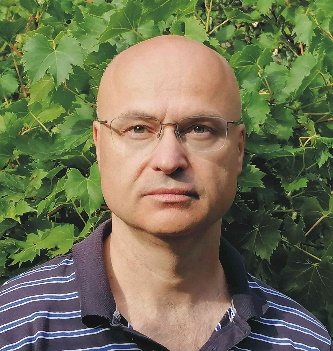Submission Deadline: 31 August 2025 View: 1076 Submit to Special Issue
Prof. Dr. Viktor Gribniak
Email: viktor.gribniak@vilniustech.lt
Affiliation: Chief Researcher, Head of the Laboratory at Vilnius Gediminas Technical University (VILNIUS TECH), Lithuania
Research Interests: Polymeric and cement-based composite materials; Fracture mechanics; Additive manufacturing; High-temperature effects on physical properties of structural materials; Constitutive and numerical modeling

Prof. Dr. Zdeněk Kala
Email: Zdenek.Kala@vut.cz
Affiliation: Brno University of Technology, Czech Republic
Research Interests: Stochastic computational mechanics; Global sensitivity analysis; Structural reliability and safety; Nonlinear structural mechanics; Metal structures and stability; Buckling and lateral-torsional buckling; Imperfection sensitivity (steel structures); Geometrical nonlinear analysis of steel structures; Monte Carlo simulation techniques

Prof. Dr. Constantin E. Chalioris
Email: chaliori@civil.duth.gr
Affiliation: Democritus University of Thrace, School of Engineering, Xanthi, Greece
Research Interests: Design and analysis of reinforced / prestressed concrete and masonry structures; Testing of reinforced concrete members under static and cyclic loading; Repair and strengthening of concrete members and structures (resin injections, Fibre-Reinforced-Polymer materials, reinforced cast-in-place concrete, self-compacting concrete, and shotcrete jacketing)

The modern industry can fabricate advanced composite materials with pre-defined physical properties, which already have aviation, automotive, and medical applications. Still, the building industry generates substantial budgets worldwide and utilizes vast natural resources, employing traditional design approaches. The current consequences of climate change also raise the necessity of changing structural design concepts. Advanced fabrication technologies and renewable natural resources of materials and energy can contribute to developing safe, comfortable, and environment-friendly built environments. However, this industry transformation requires computational design advancements and reliable verification to optimize fabrication and minimize structural risks.
Therefore, this Special Issue is mainly dedicated to structural problems, incorporating three interrelated topics: 1) New materials, material models, computational design and manufacturing procedures, and materials characterization for model verification; 2) Analysis and optimization of existing design principles, structural sensitivity analysis, and AI application in structural design; 3) New structural concepts (including strengthening of existing structures), composite, polymeric, steel, and renewable materials and structures, structural reliability and sustainability, and experimentally verified structural models.
Focusing on advanced algorithms and design achievements, this Special Issue prefers integral investigations, combining numerical analysis and experimental verification procedures. Applied research and case studies of advanced design solutions are also highly welcomed. In addition, regardless of the innovativeness of advanced materials, this Special Issue does not abandon fundamental engineering principles, which are highly recommended for investigating and implementing modern algorithms.



 Submit a Paper
Submit a Paper Propose a Special lssue
Propose a Special lssue